José Mourinho and Tottenham Hotspur were currently enjoying their honeymoon period in the Premier League; winning four from their last five games. This positive streak helped The Lilywhites to ascend from the fourteenth spot to the European zone. Not only that, a win in this game would help them to clinch the fourth place coming to Boxing Day.
In the other side, Frank Lampard’s Chelsea were having an opposite league form from the home side; with only one win in their last five. Such poor run was not a good morale booster for Lampard ahead of his first-ever league clash with his old gaffer.
Almost to everyone surprise, Lampard deployed interesting tactics in this encounter. Even though Chelsea were helped by Tottenham’s multiple defensive errors, they were able to nullify the home side for 90 minutes; credit to Lampard’s tactical creativity. This tactical analysis will inform how the match unfolded.
Lineups
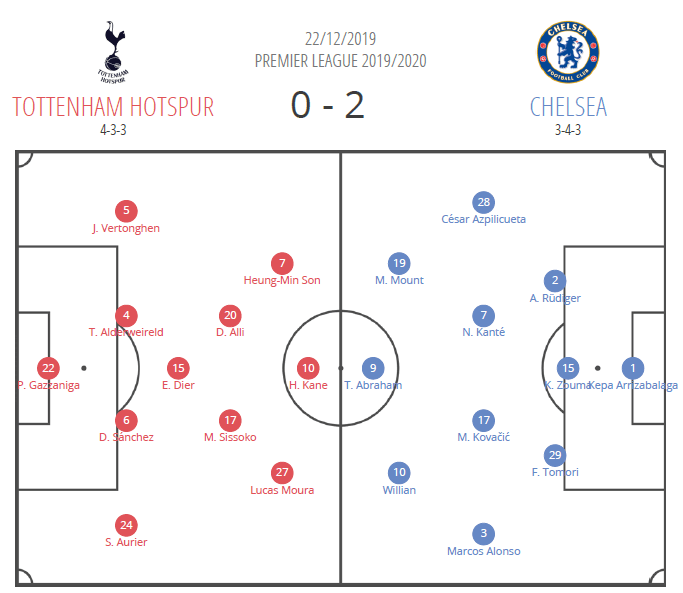
Mourinho opted for 4–1–2–3 for his team. The duo of Dávinson Sánchez and Toby Alderweireld started at the heart of the defence, while Eric Dier started to provide defensive support ahead of them. Upfront, talisman Harry Kane was flanked by Lucas Moura and Son Heung-min to lead Spurs’ frontline. Names like Christian Eriksen, Tanguy Ndombele, and Danny Rose had to start the game from the bench.
In the other side, surprisingly Lampard chose a rather unorthodox formation in 3–4–3, which would move to 5–2–3 in defensive situations. The back three consisted of Antonio Rüdiger, Kurt Zouma, and Fikayo Tomori. Breakout star Tammy Abraham led the attacking line with Mason Mount and Willian alongside him. Chelsea’s dugout was filled with names like Jorginho, Michy Batshuayi, and Reece James.
Chelsea’s calculated 5-2-3
Tottenham shifted their formation to a lopsided 3–2–4–1 in build-ups while maintaining their 4–1–2–3 in defensive situations. In the 3–2–4–1, Jan Vertonghen tucked inside next to the centre-backs while Serge Aurier moved higher alongside the midfielders.
The most possible reason behind this was due to their different skillset and characteristics. Vertonghen — naturally a centre-back — is more comfortable with the ball in his feet and spraying passes forward; alongside his great size to win physical duels. Oppositely, Aurier relies more on agility and pace, which is very useful when attacking in wide areas.
Lampard seemed to have realised Mourinho’s tactics and responded by setting his team up in 5–2–3. In that shape, Lampard asked only his forwards to aggressively press Spurs’ backline high to their pitch. One tweak in this set-up was to drop one attacker — either Mount or Willian — slightly behind the other to so he could close a passing lane to be made to Spurs’ Dier. This tweak indeed would mean abandoning the ball-far side centre-back, but Spurs’ rather slow build-ups hindered themselves to play smoothly from the back.
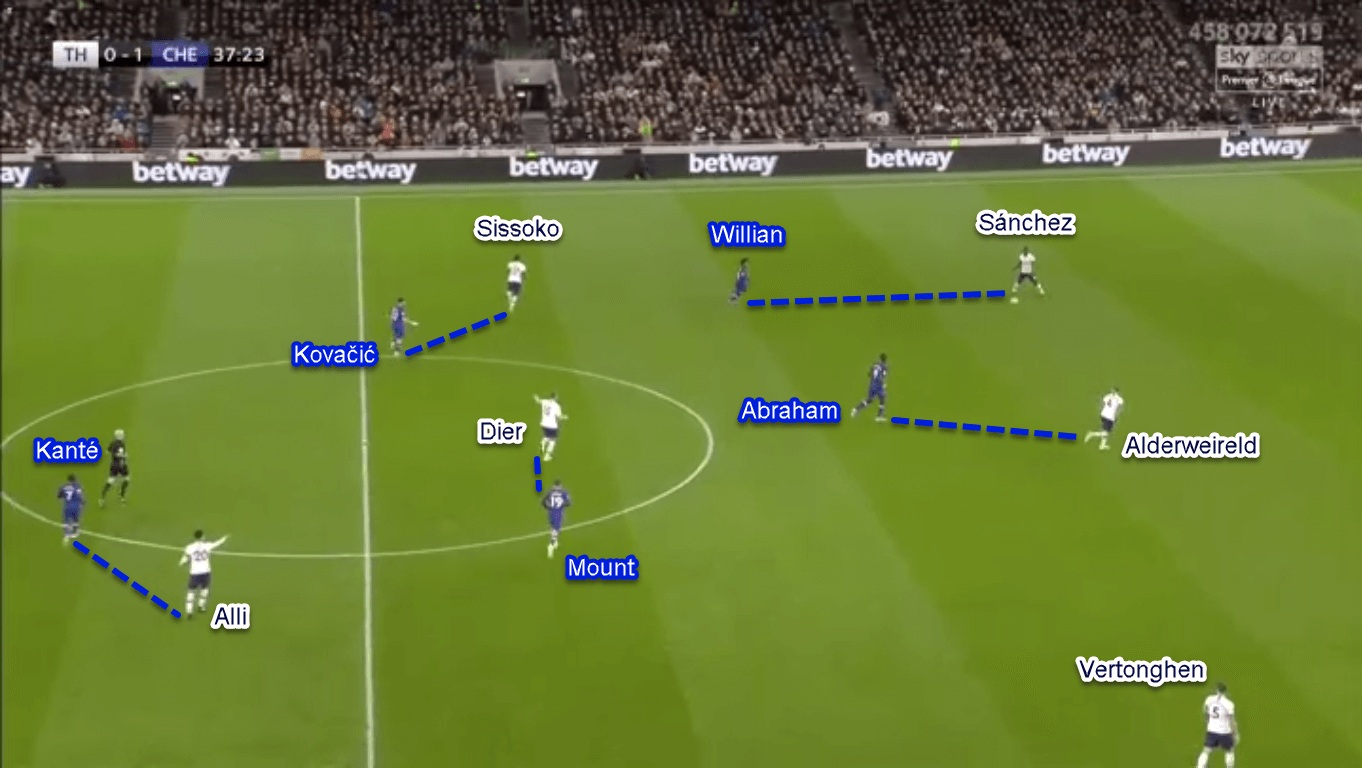
Behind the frontmen, the Mateo Kovačić and N’Golo Kanté were tasked to play zonal man-oriented defending. This means the duo were instructed to stay in shape rather than following Dele Alli and Moussa Sissoko had they drop very deep or drifting wide.
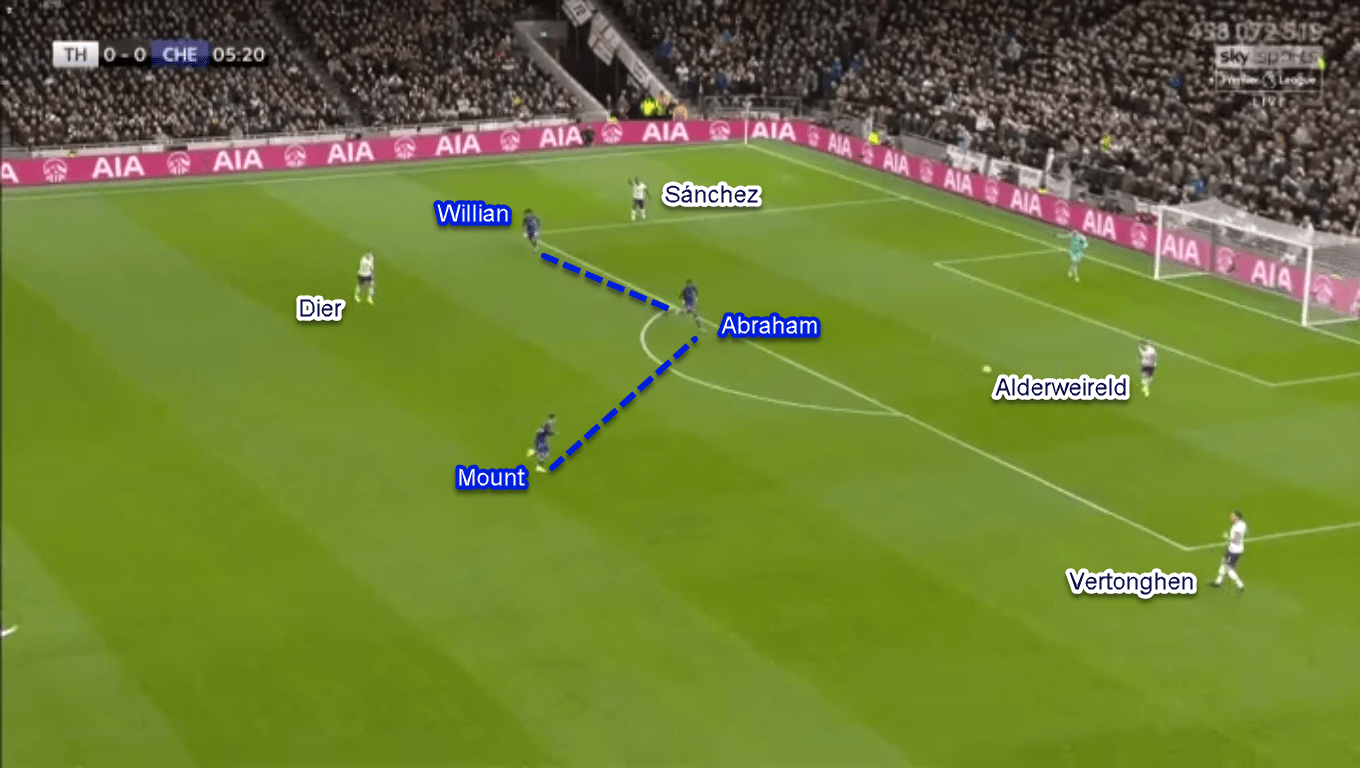
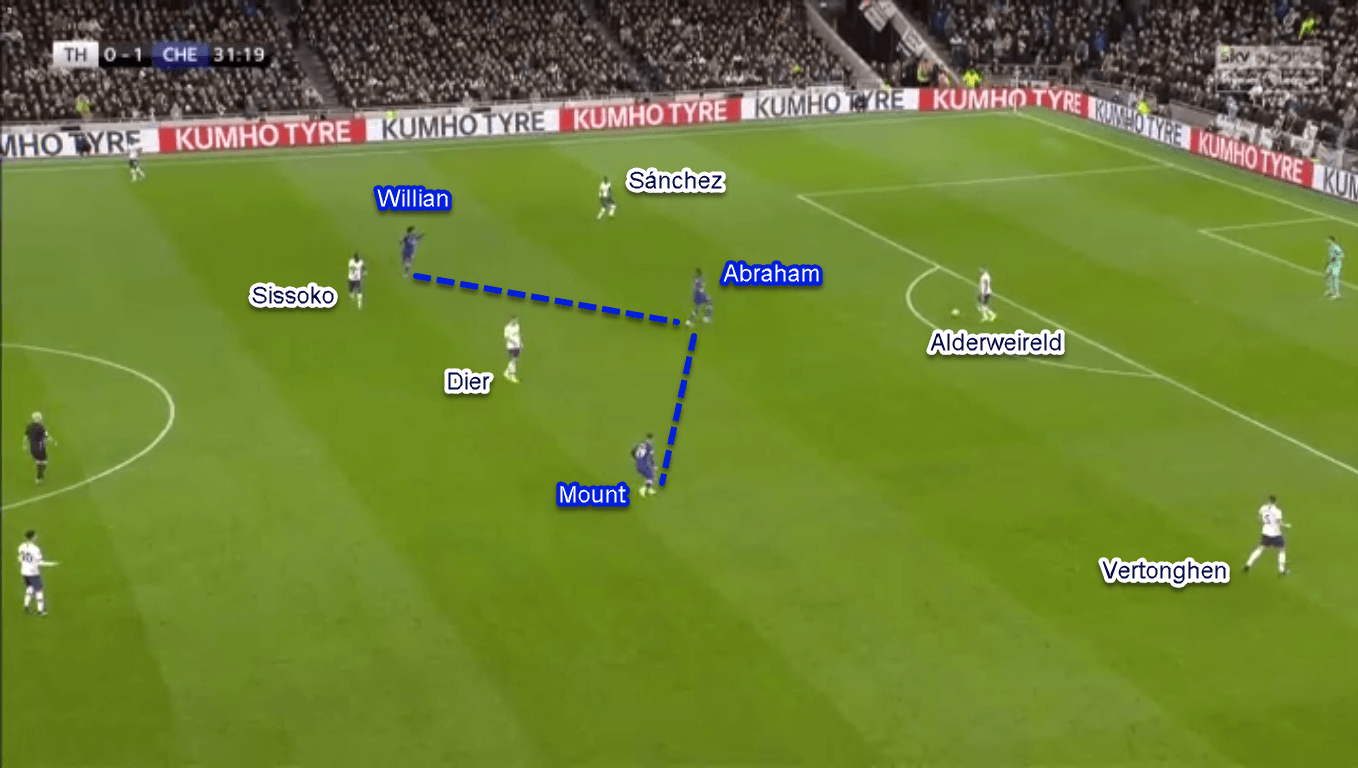
Tottenham with the limited answer
Knowing that Chelsea were playing a man-oriented defending — especially in the midfield area — Mourinho allowed his attackers to drop and switch positions to progress the ball. His main options were Alli, Kane, and Son on the left side; due to their on-ball quality and cohesion compared to Lucas-Sissoko-Aurier.
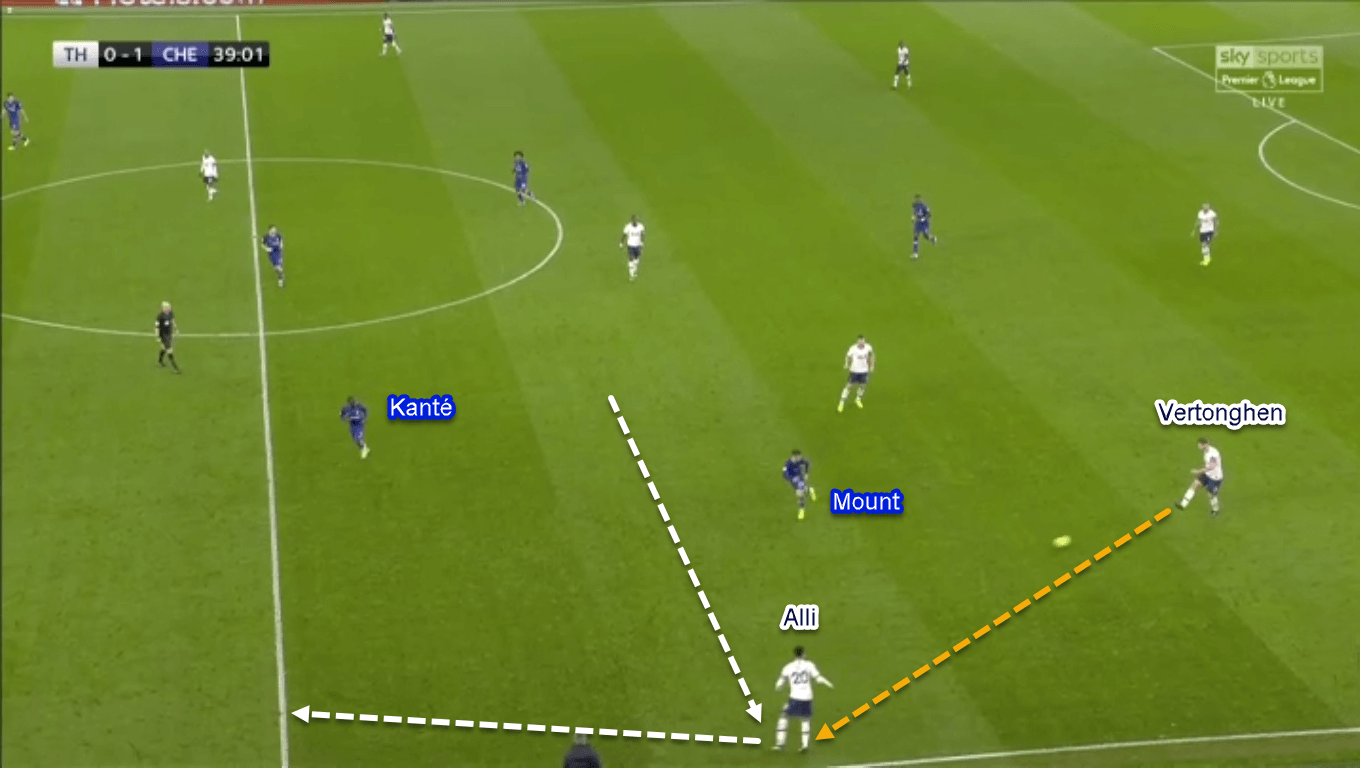
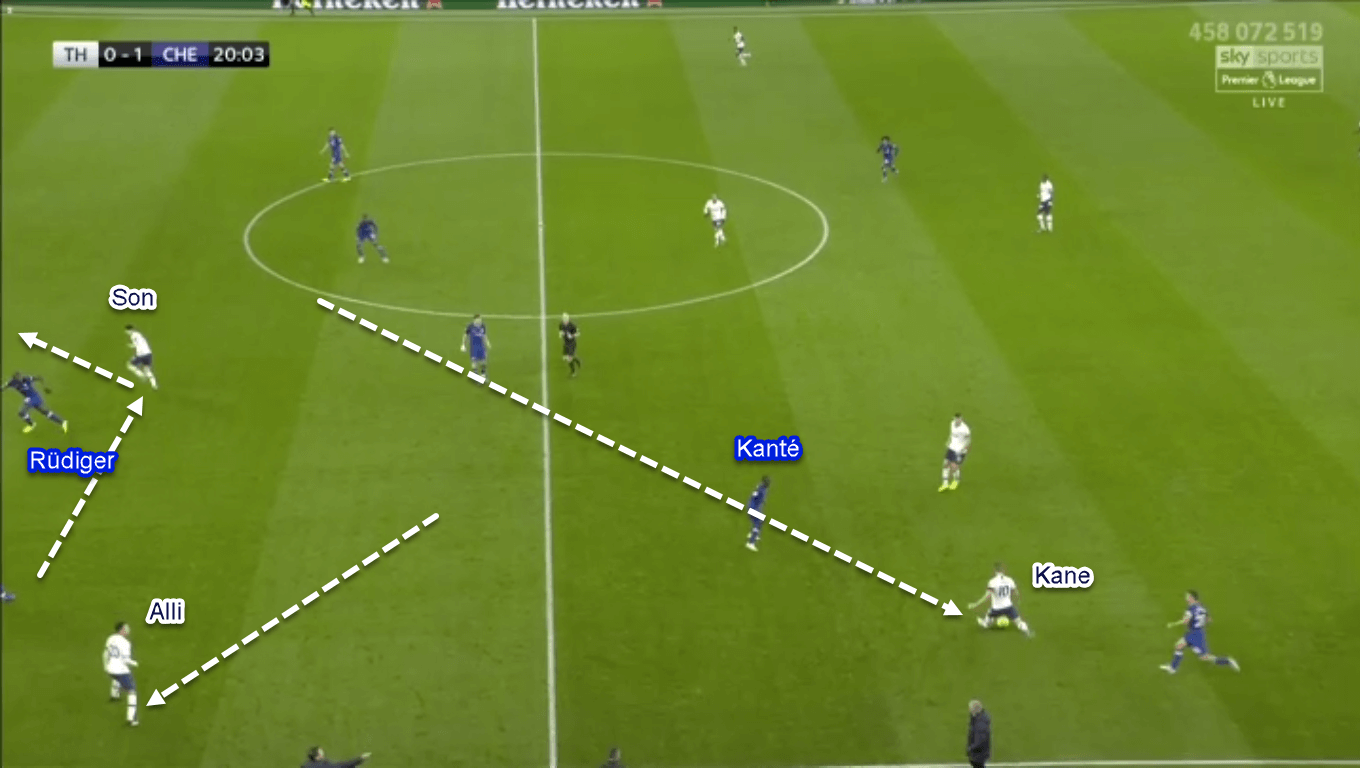
With only two Chelsea midfielders and their man-oriented focus, one of Spurs’ trio would move quite freely in the left flank to receive from Vertonghen or Dier before combining. Not only that, if they could combine properly and pull Kanté and Kovačić to the ball, the trio then could capitalise on the empty ball-far side.
However, such set-up didn’t happen very often. First, because Spurs’ rather slow and predictable build-up play, which has been mentioned before in this analysis. Second, due to the few attackers to drop in midfield and ask the ball to be played into their feet. This lack of players didn’t help Spurs to bridge their first line with their attacking line swiftly; thus forcing them to play inaccurate long balls. Third, Spurs’ attackers’ tendency to make runs in behind; sometimes simultaneously. This tendency sometimes would force the on-ball player facing multiple opponents without nearby forward passing options, and eventually lose the ball.
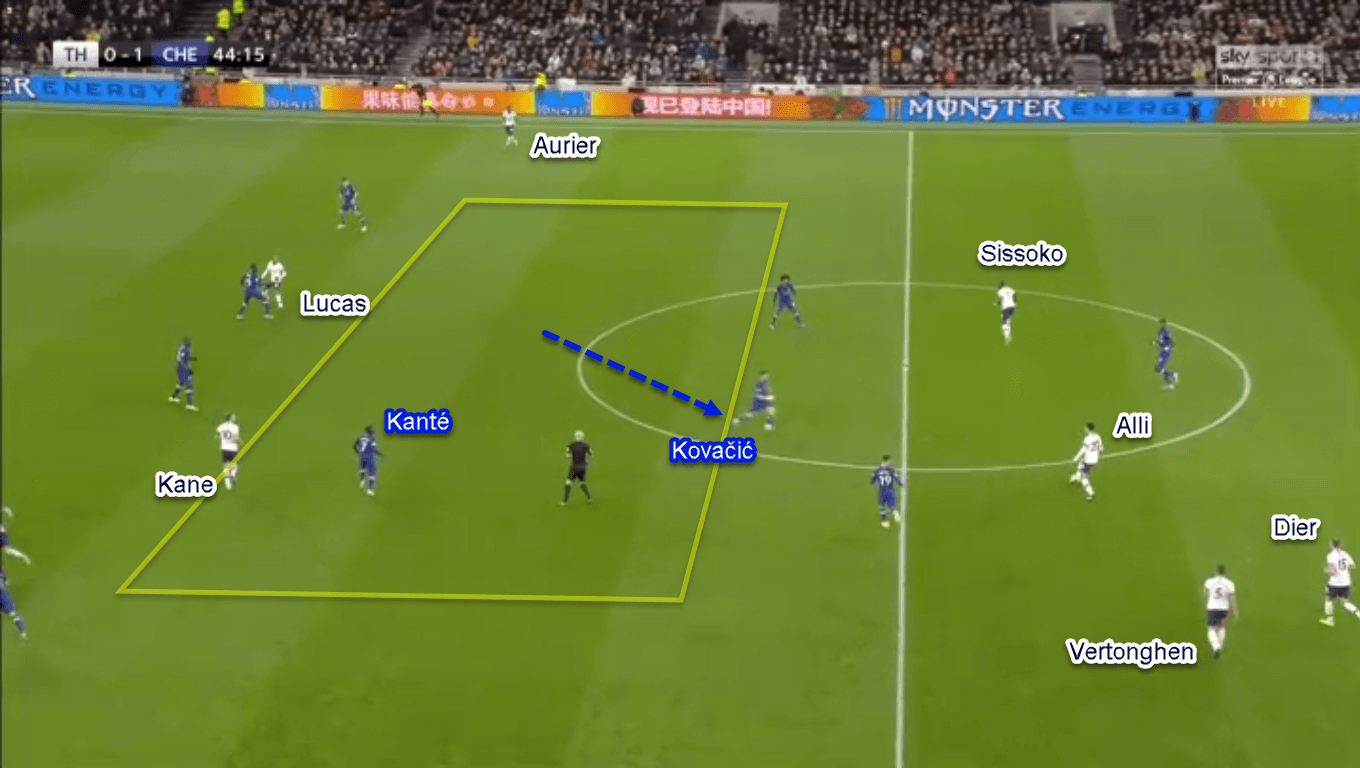
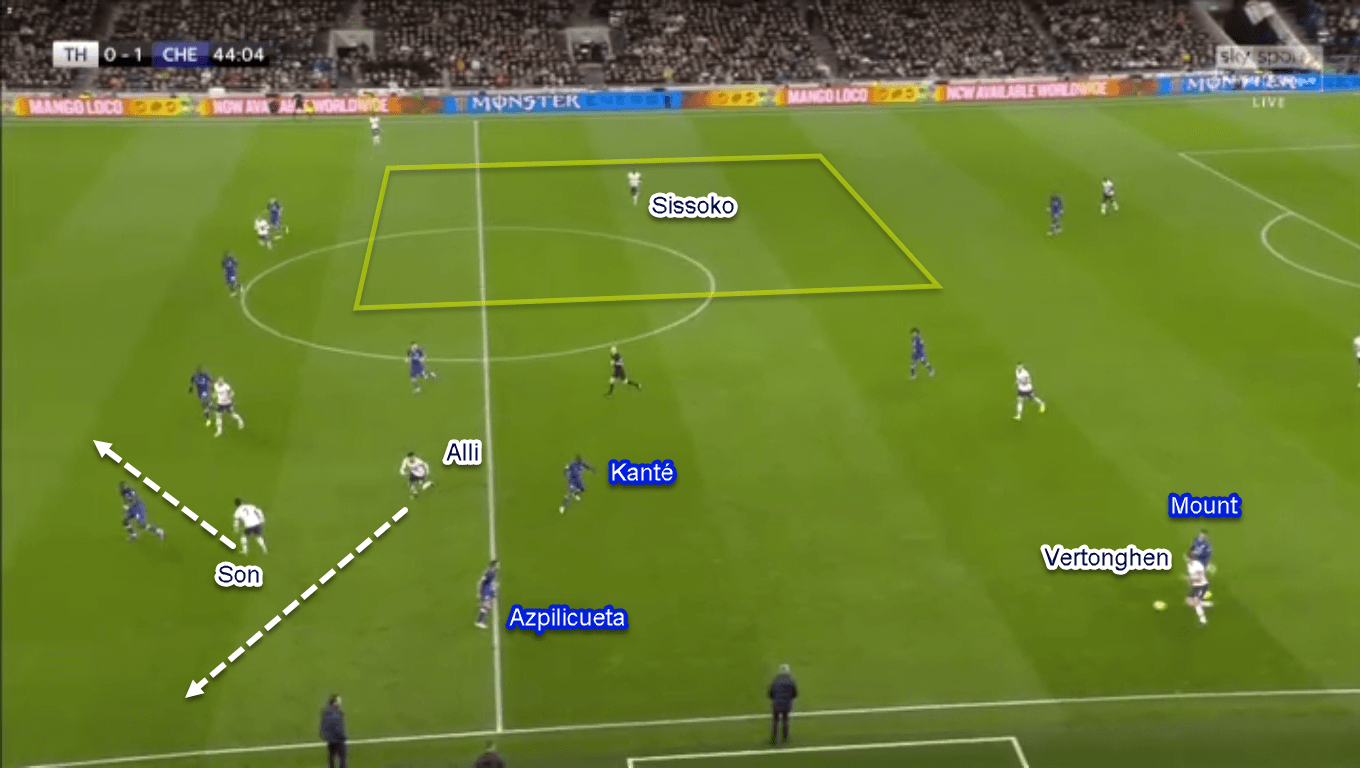
Chelsea’s clever offensive plays (part one)
When in possession, Chelsea used 3–4–3 with their wing-backs moving up to provide width in more advanced areas. Spurs’ initial idea was to defend in a high-press 4–1–2–3 with man-oriented defending. Upfront, Lucas and Son were tasked to defend in the half-spaces; staying close to Chelsea’s outside centre-backs and abandon the wing-backs. Behind them, Sissoko-Alli were marking Kovačić-Kanté, while Dier keeping his eyes on Mount, who tended to move more centrally than Willian.
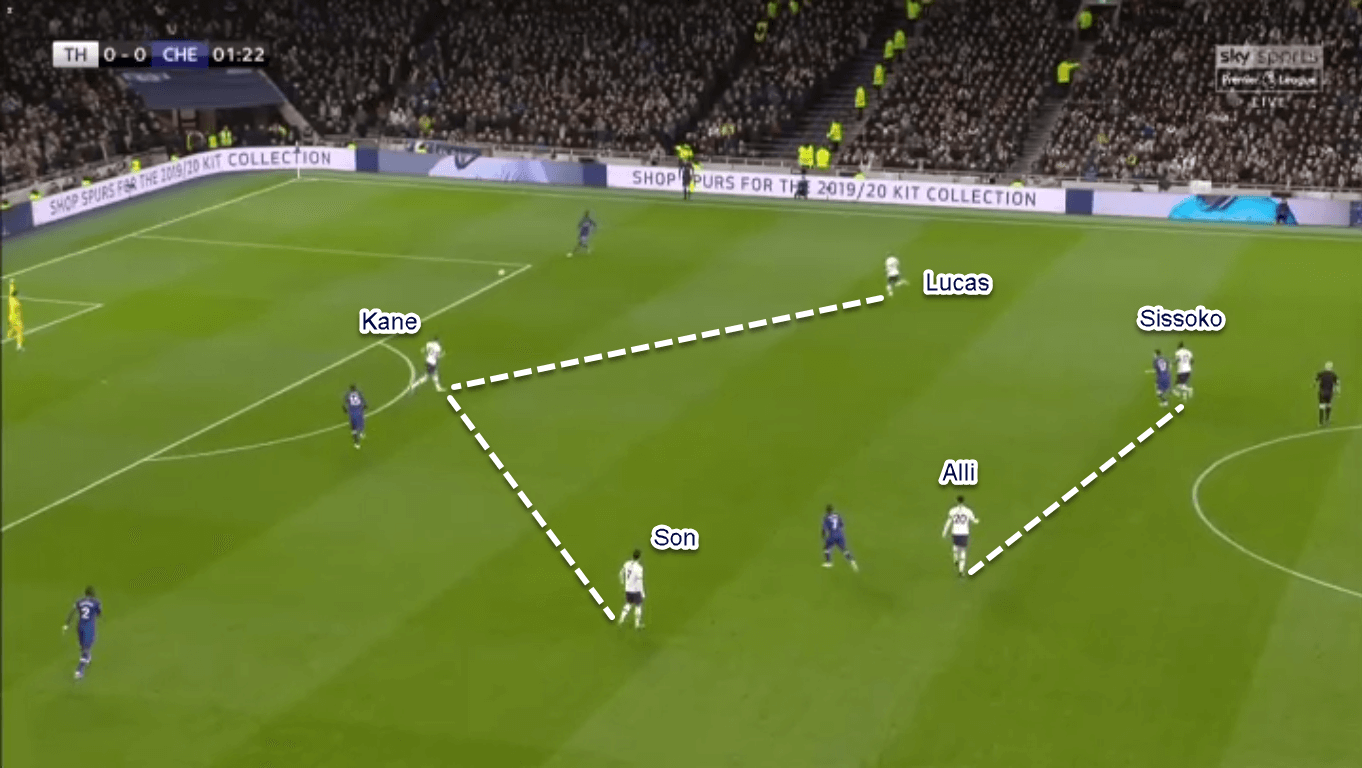
Knowing that Spurs would congest the central spaces, Chelsea opted to build their play directly to the flanks. They would try to access the wing-backs in two alternatives. Before getting to that, credits must be given to Lampard who asked his wingers to tuck inside and pin Spurs’ full-backs with them. Such set-up would open a huge space for Chelsea’s wing-backs on both flanks, also punishing Mourinho’s instruction for Son and Lucas to stay with Chelsea’s centre-backs.
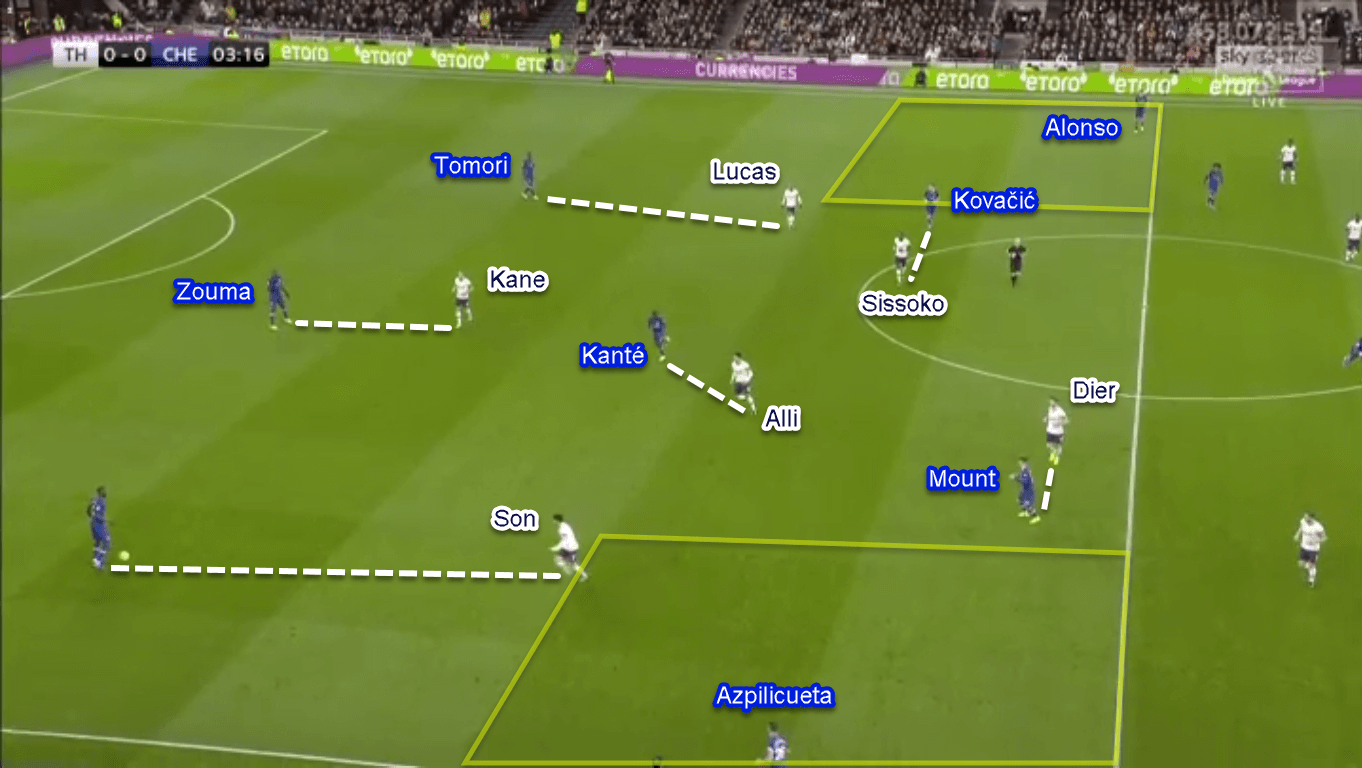
To access the flanks, first Chelsea would do that by allowing the wing-back to make an overlapping run and find them with a diagonal pass. This would allow them to receive the ball in a more advanced area. Such an approach was the main reason behind Willian’s first goal.
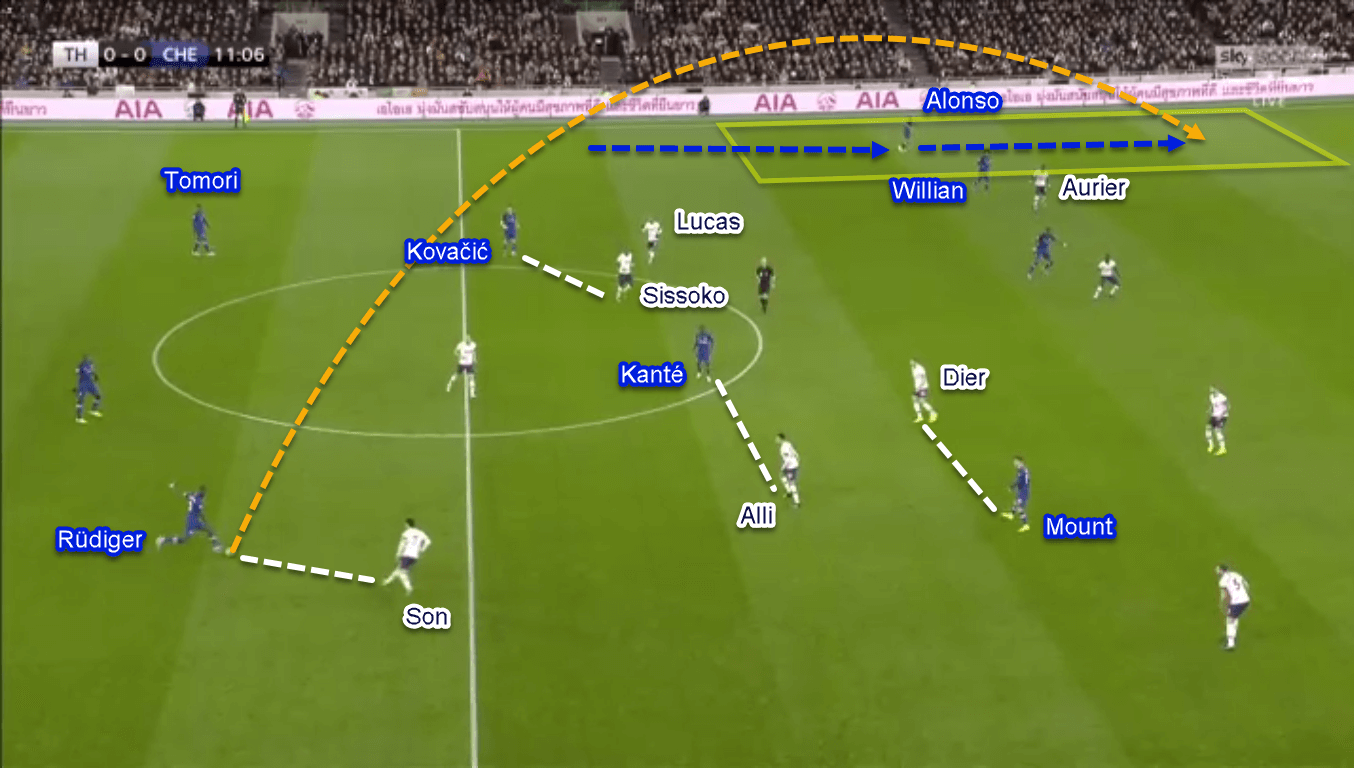
Chelsea’s clever offensive plays (part two)
Second, by sending a diagonal ball to the wing-back in the halfway line. After receiving, Spurs would react by congesting the ball-side space heavily and prevent the ball to be played to the forwards; moving to a temporary 4–1–4–1 in the process.
In this alternative, Chelsea tended to use the left flank first before accessing Azpilicueta in the far right. This was because of Kovačić’s supreme ability on the ball and in tight spaces compared to Kanté. Not only that, but Willian also tended to drift a bit wide compared to Mount, which allowed more space to be available in the right flank.
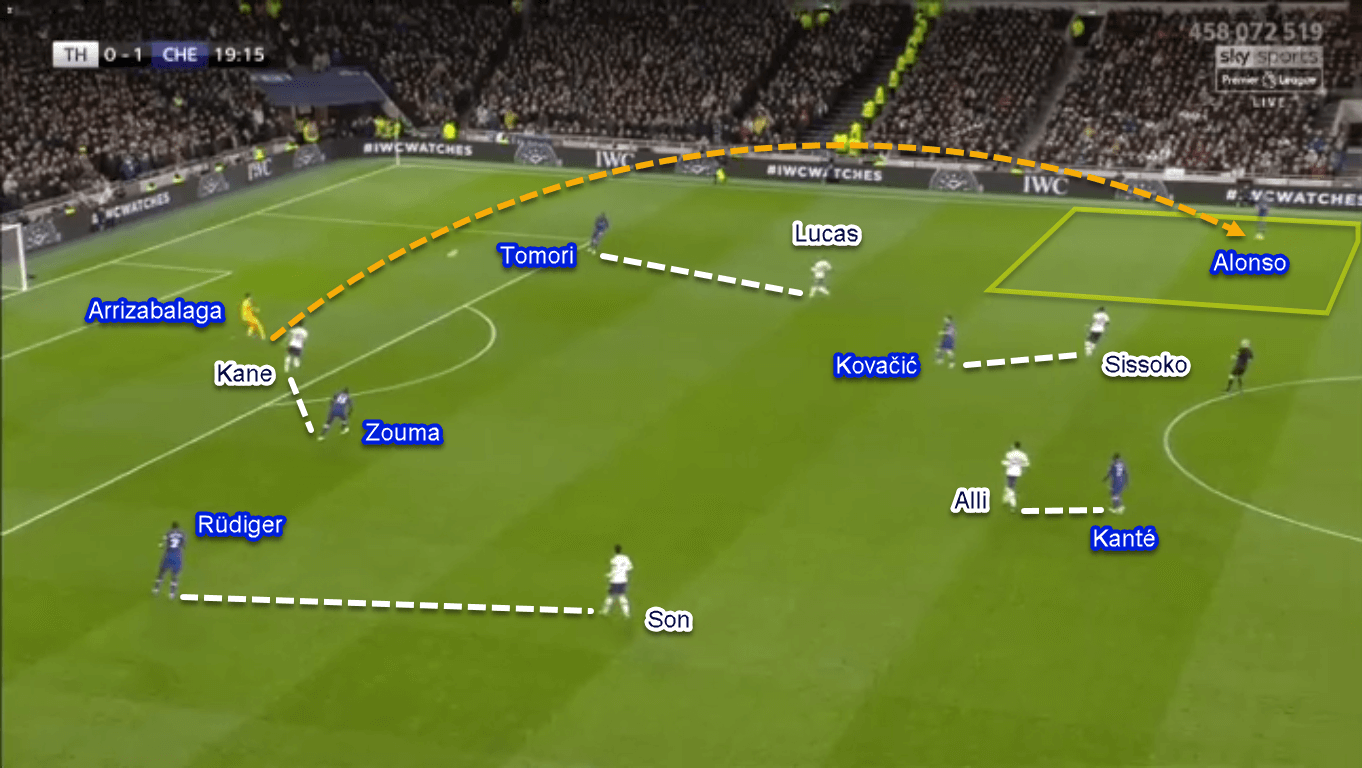
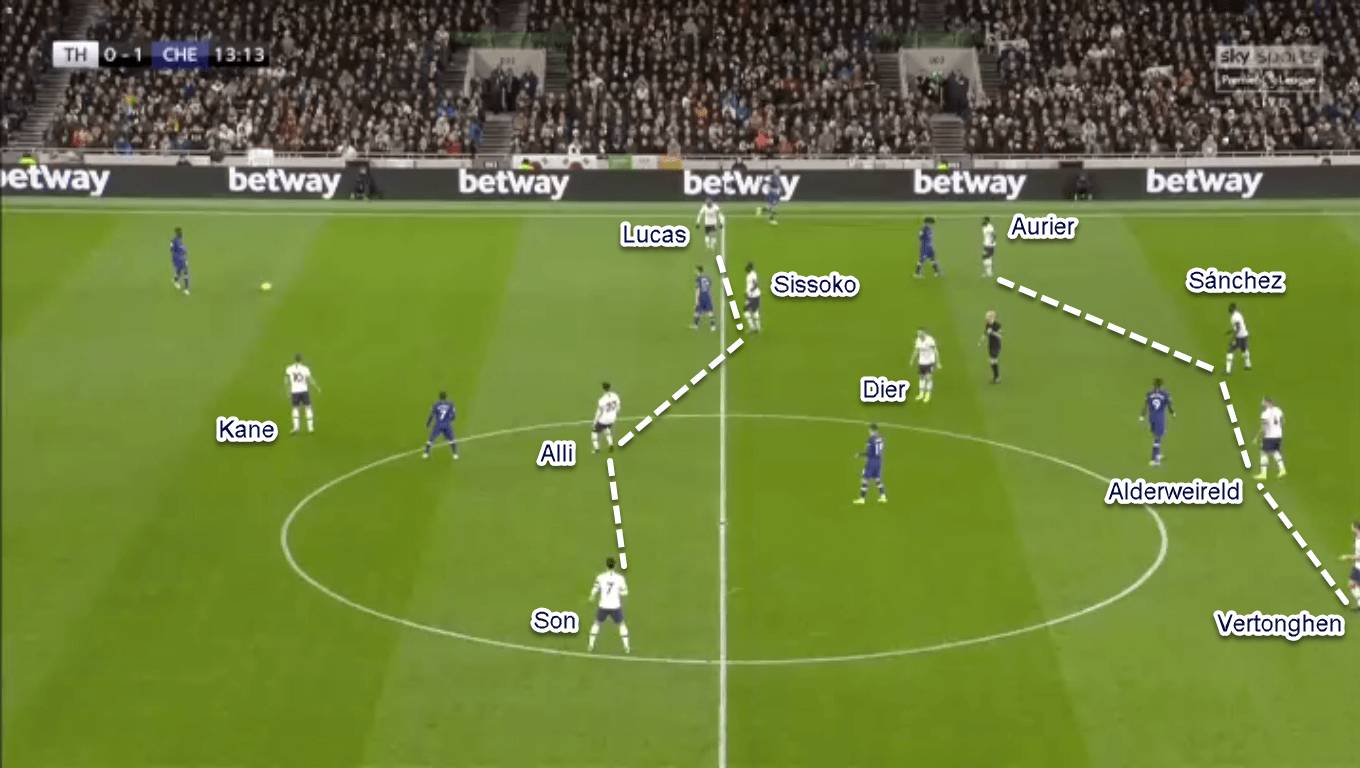
Reacting to that, the on-ball wing-back would combine with his nearest winger and midfielder. This combination then would allow them to send a diagonal ball to the overlapping wing-back in the opposite part of the pitch. With Spurs focusing on the ball-side, The Lilywhites gave away a lot of space and time for Chelsea’s far-side wing-back to receive in the final third.
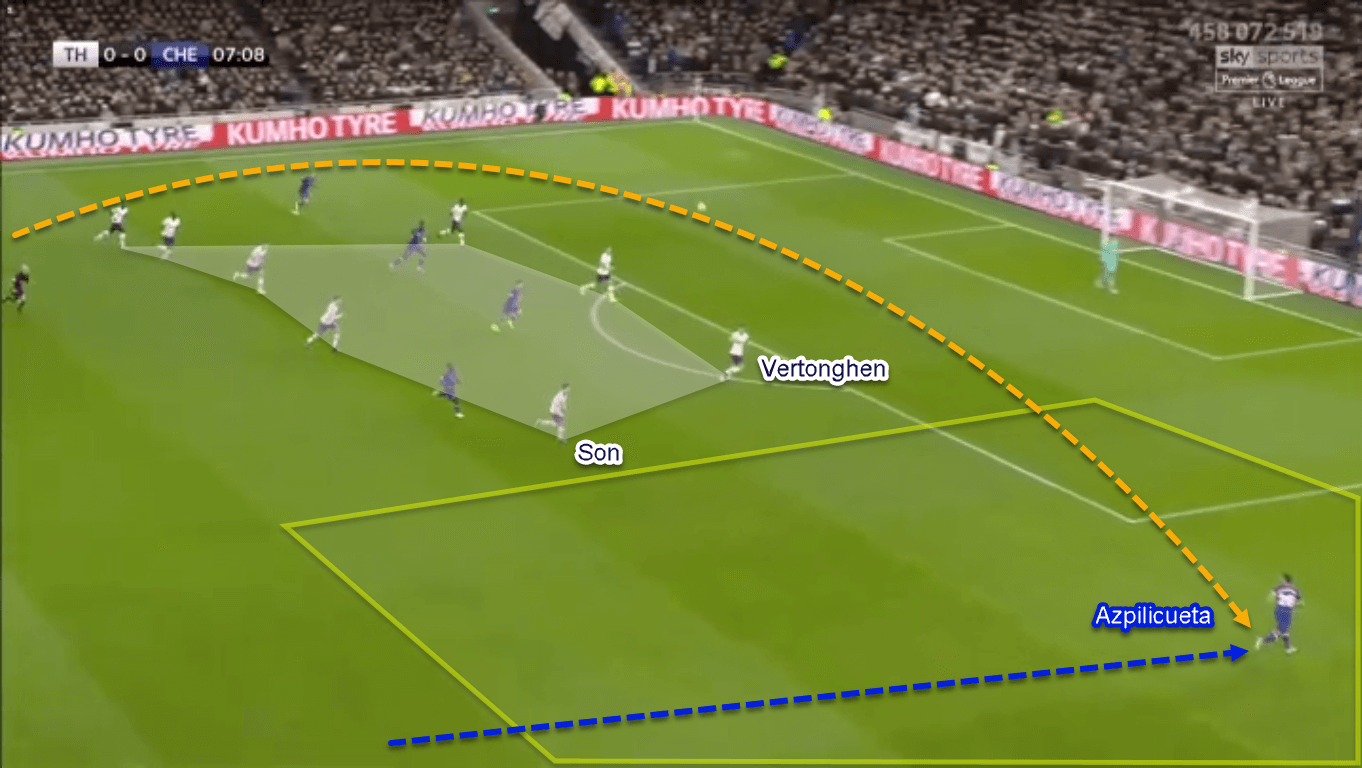
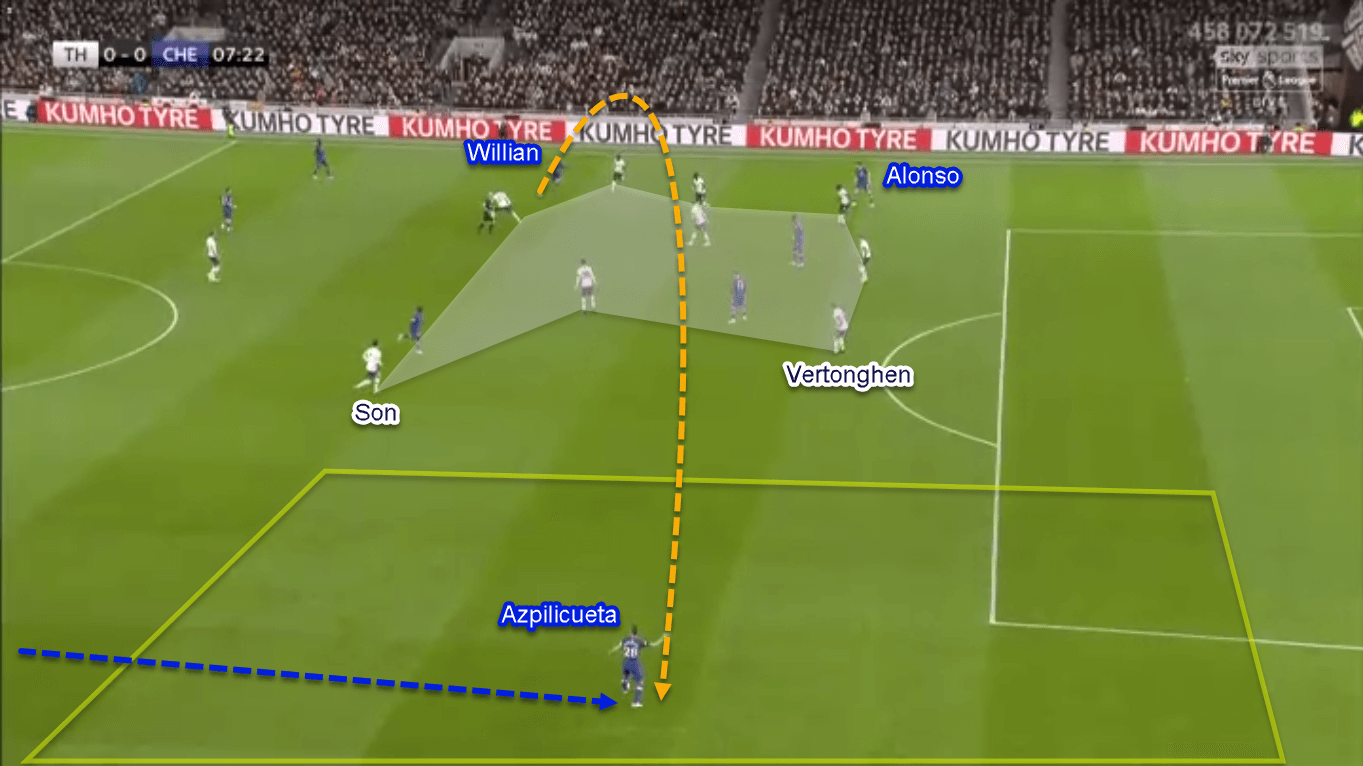
Mourinho’s second-half adjustments
Getting into the second half, Mourinho made a bold switch to bring on limitless-passing-range Eriksen for defensive Dier. Not only that, Spurs moved permanently to 3–2–5 with all attackers in line with Kane; previously slightly behind. However, Eriksen’s sub-par performance didn’t help Spurs as expected. It was another interesting tweak in the midfield that was used to damage Chelsea’s defence.
Mourinho’s tactic to punish Chelsea’s midfield hole were as follows: first, by instructing the ball-side winger to stay wide, thus stretching Chelsea’s backline. Second, by putting one attacker nearby/between Kanté and Kovačić so Chelsea’s midfield duo stayed central all the time.
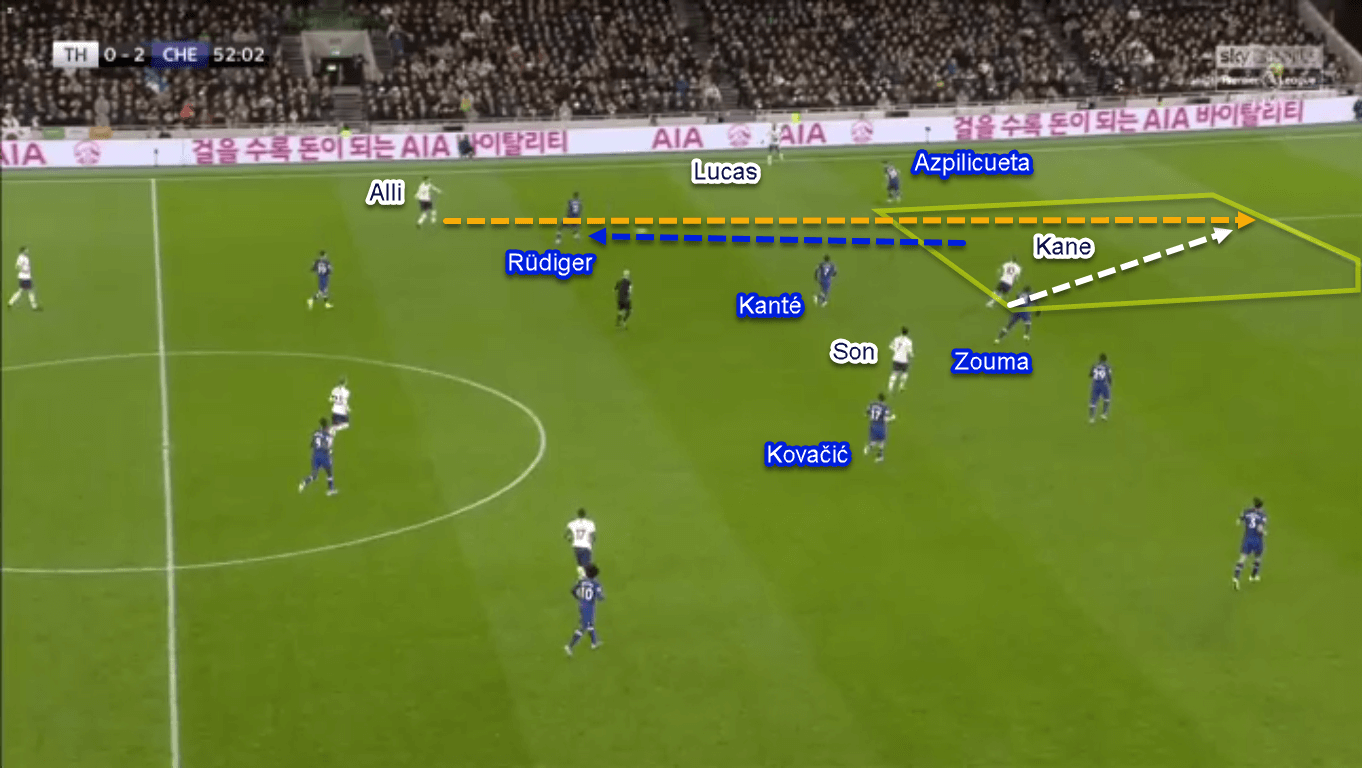
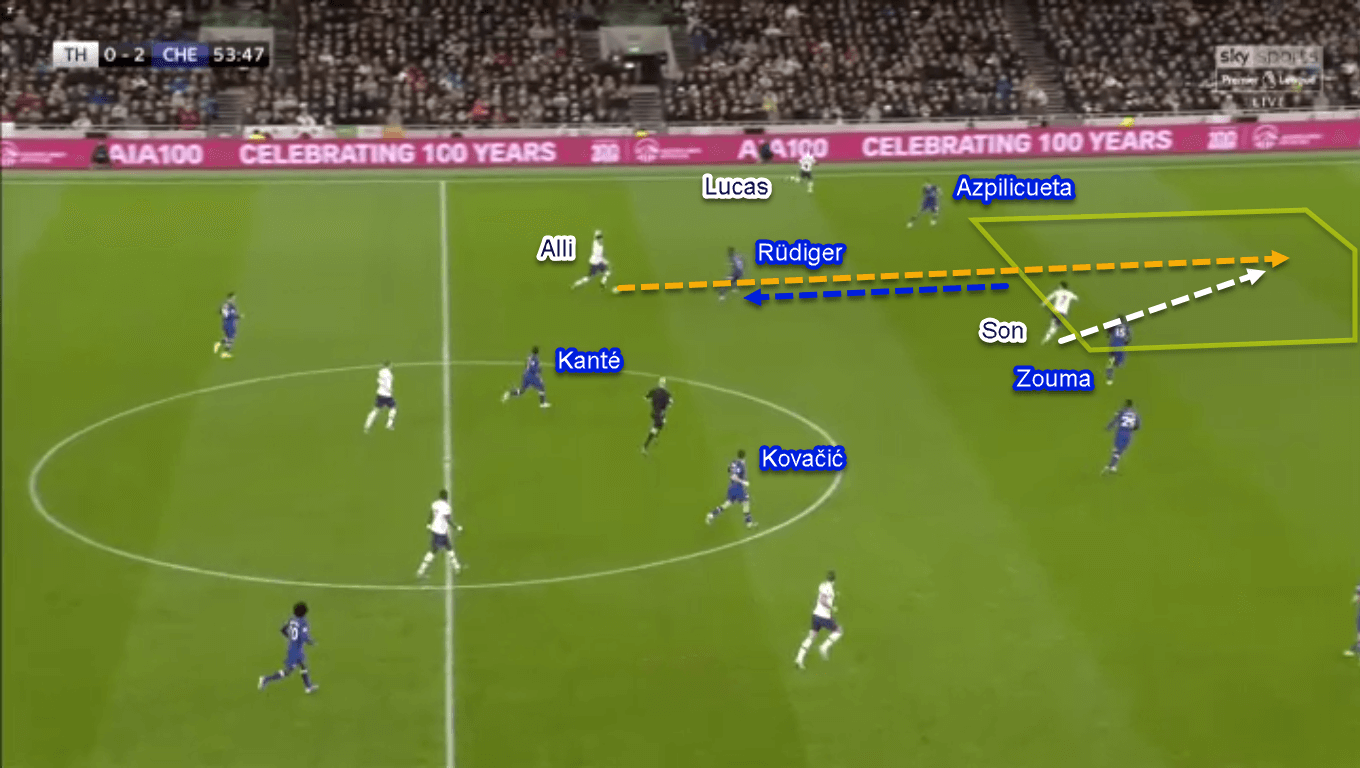
Third, by allowing Alli to drop inside the left half-space. This movement forced Rüdiger to step up so Alli couldn’t receive with ample space and time. Rüdiger’s forward movement eventually would open space between Zouma and Azpilicueta. This space then would be attacked by either Son or Kane — both have moved centrally — with a run in behind chasing Alli’s pass.
However, Son’s red card prevented Spurs from deploying tactic more often. The reason was because of the lack of players to apply the chain movements.
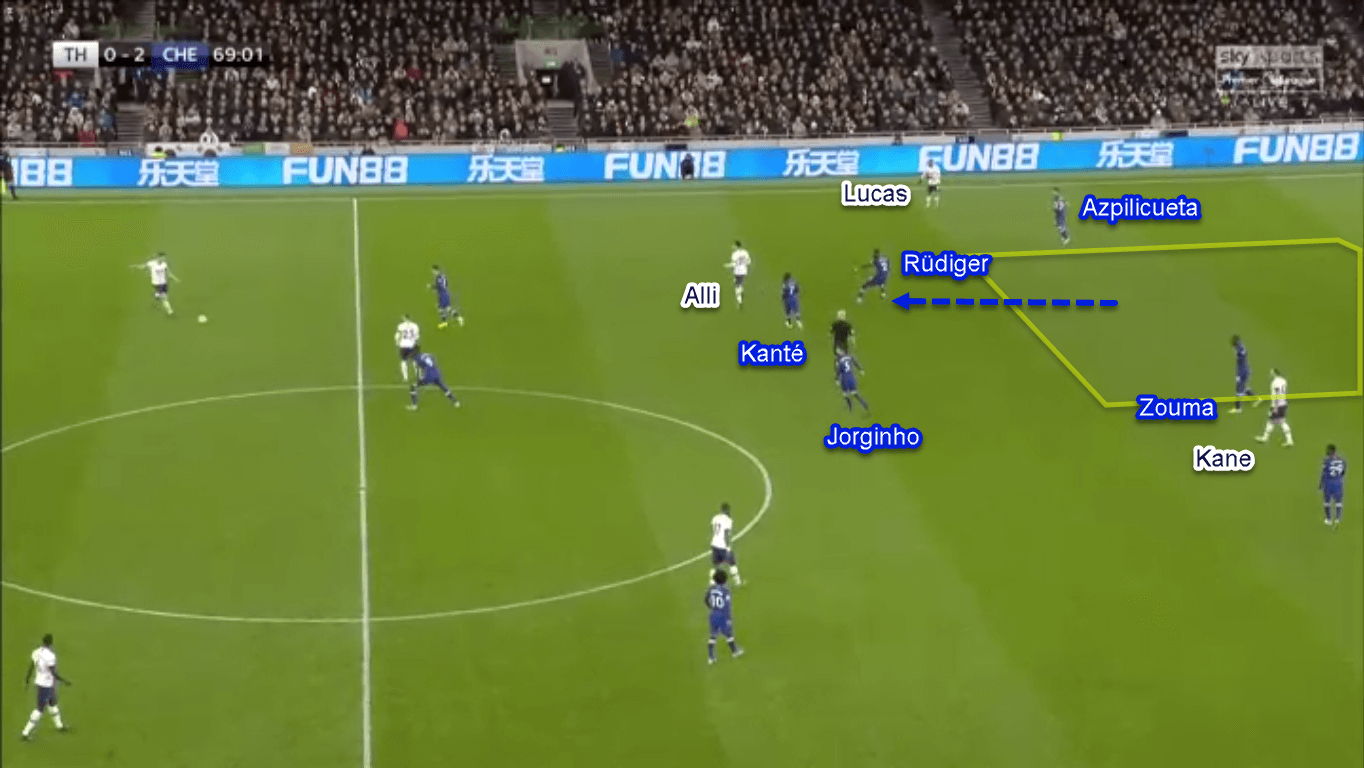
Conclusion
As an apprentice, Lampard did follow some of Mourinho’s footsteps; proven by their tendency to use man-oriented defending and rather direct attacks. However, Super Frank’s surprising yet smart tactics was the differentiator between him and his old boss in this game.
Not only that, costly defensive errors and a VAR-induced red card were the tasty additional ingredients to this dramatic encounter. After beating his mentor back in his Derby County days last year, the apprentice once again proved to Mourinho — and all Premier League managers — that he’s a force to be reckoned with.

If you love tactical analysis, then you’ll love the digital magazines from totalfootballanalysis.com – a guaranteed 100+ pages of pure tactical analysis covering topics from the Premier League, Serie A, La Liga, Bundesliga and many, many more. Buy your copy of the December issue for just ₤4.99 here





Comments